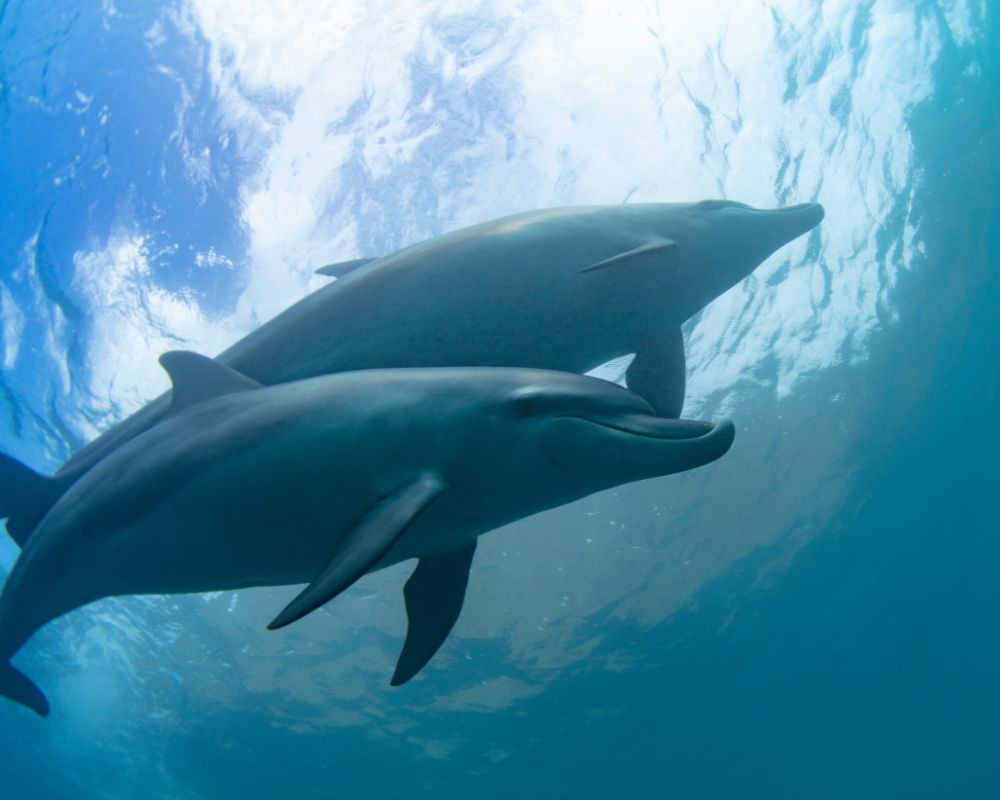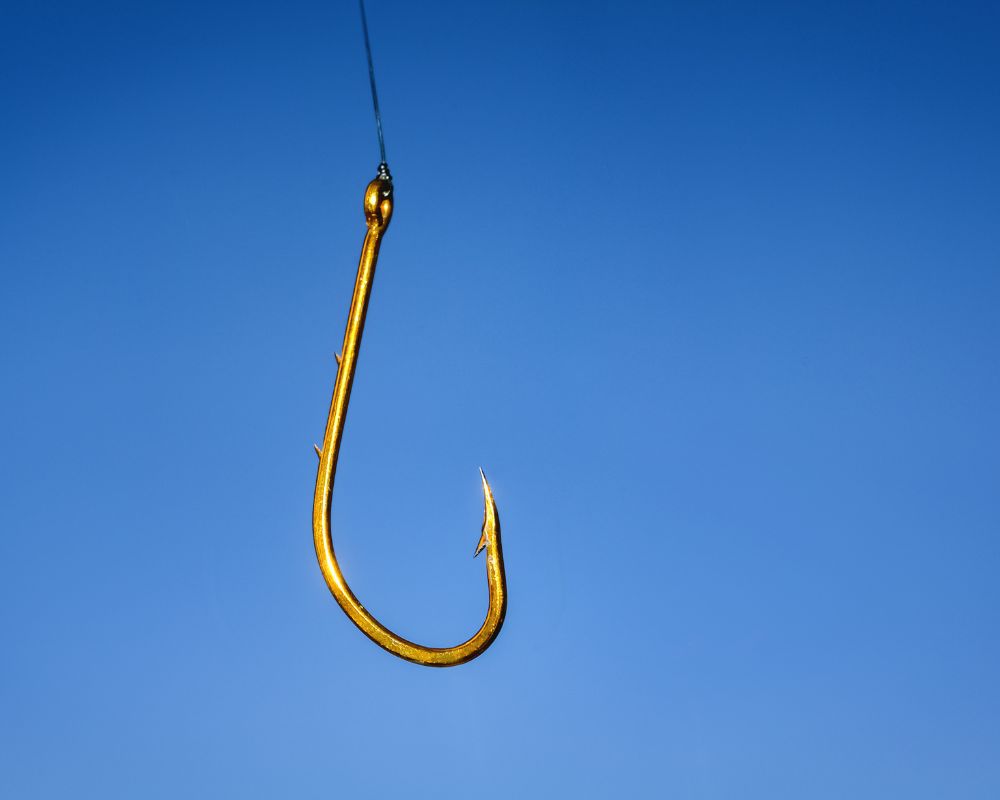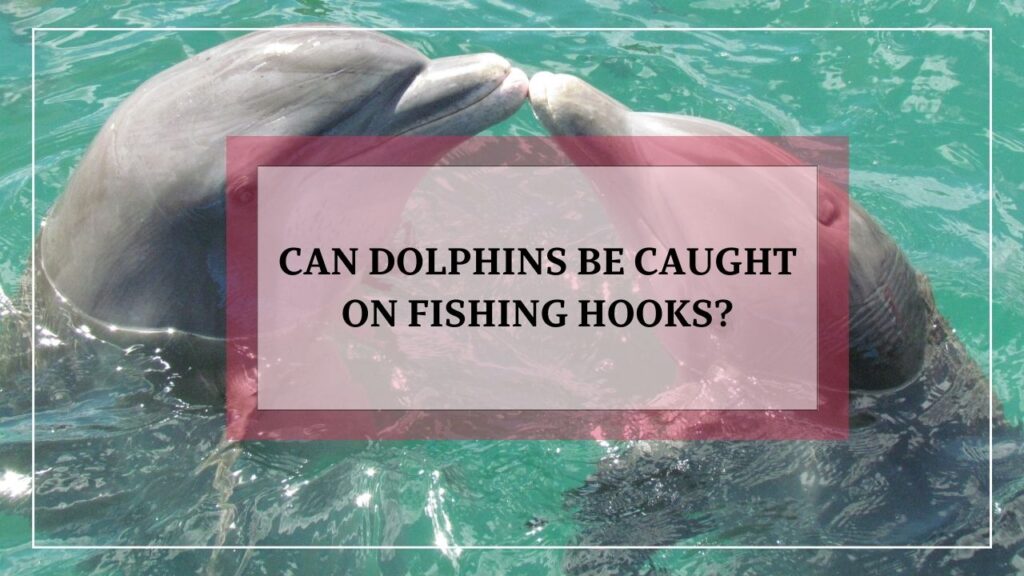Have you ever wondered if dolphins can be caught on fishing hooks? It’s a common question that many people have when they think about the potential impact of fishing on marine life.
Dolphins are intelligent and social animals that can be found in oceans all over the world. Unfortunately, fishing gear can pose a threat to these creatures, causing accidental entanglement that can be harmful or even fatal.
It’s important to understand how we can prevent unintentional harm to dolphins and other sea creatures.
In this blog post, we’ll explore the question of whether dolphins can be caught on fishing hooks. We’ll delve into the behavior of dolphins and how they interact with fishing gear.
We’ll also discuss ways to prevent accidental entanglement and the laws and regulations in place to protect these animals.
Can Dolphins be Caught on Fishing Hooks?

Yes, dolphins can be caught on fishing hooks. While they are not typically targeted by fishermen, accidental entanglement can occur if dolphins approach fishing gear out of curiosity or to scavenge for food.
So, What Are The Types Of Fishing Gear That Can Catch Dolphins?
Here are some of the types of fishing gear that can pose a threat to dolphins:
1. Nets
Nets are one of the most common types of fishing gear that can entangle dolphins. Dolphins can become trapped in gillnets or drift nets, which are designed to catch fish by entangling them in the netting.[1]
Unfortunately, dolphins can become entangled in the nets as well, and may not be able to swim to the surface to breathe.
2. Longlines
Longlines are fishing lines that have multiple hooks attached to them. These lines can extend for miles and can be used to catch a variety of fish species.
However, dolphins can accidentally become hooked on these lines as well, particularly if they are swimming near the surface of the water.
3. Trawls
Trawls are fishing nets that are dragged along the bottom of the ocean floor. They are commonly used to catch bottom-dwelling fish species like shrimp and cod.
However, trawls can also catch dolphins if they are swimming along the ocean floor.
Likelihood Of Dolphins Being Caught On Hooks

While it is possible for dolphins to be caught on fishing hooks, it is not very common. Dolphins are typically not targeted by fishermen, and accidental entanglement is the main concern.
However, the likelihood of a dolphin being caught on a hook depends on a few factors:
1. Location
Dolphins are more likely to become entangled in fishing gear in areas where there is a high density of fishing boats and gear. For example, dolphins in areas where gillnetting is common are at a higher risk of becoming entangled in fishing gear.
2. Species
Different species of dolphins have different behaviors and habits, which can affect their likelihood of becoming entangled in fishing gear.
For example, bottlenose dolphins are more likely to become entangled in nets than other dolphin species.
Accidental entanglement in fishing gear is a serious issue for dolphins. An estimated 650,000 marine mammals, including dolphins, are caught in fishing gear each year in the United States alone.
While not all of these animals are dolphins, it’s clear that accidental entanglement is a major concern for the well-being of marine life.
Why is it Harmful to Catch Dolphins on Fishing Hooks?
Dolphins can become entangled in fishing gear in a number of ways. When the fishing gear is set, it can float on the surface or be suspended at depth, depending on the type of gear.
They may be attracted to the gear for a number of reasons, such as the movement of the bait, or the presence of prey fish that are caught in the gear.
Once they approach the gear, dolphins can become entangled in the lines or nets. In the case of hooks, dolphins may be attracted to the bait and accidentally swallow the hook, becoming hooked in the process.
When dolphins are caught on fishing hooks, they can suffer serious injuries or even death. The hooks can cause damage to the dolphin’s mouth, throat, or stomach, and can become lodged in the animal’s flesh or organs.
If the dolphin is not able to free itself from the hook, it may become exhausted from struggling and drowning.
In the case of entanglement in nets, dolphins can become trapped and drown if they are unable to reach the surface to breathe.
The Impact On Marine Ecosystems:
The accidental entanglement of dolphins and other marine mammals in fishing gear is a serious issue that has a significant impact on marine ecosystems.
The removal of these animals from the ecosystem can have a cascading effect on other species, as well as on the health and stability of the ecosystem as a whole.
Additionally, the loss of these animals can have a significant economic impact on local fishing communities, as well as on the larger fishing industry.
Preventing Accidental Entanglement of Dolphins
There are several steps that fishermen can take to reduce the likelihood of accidentally catching dolphins on fishing hooks or in nets.
One approach is to use gear that is designed to minimize the chance of entanglement, such as circle hooks, which are less likely to hook dolphins in the mouth, or nets with escape hatches that allow dolphins to swim free if they become trapped.
Another approach is to avoid fishing in areas where dolphins are known to congregate or to use alternative fishing methods that are less likely to result in accidental entanglement.
But, how to minimize the harm?
If a dolphin does become caught in fishing gear, there are several steps that can be taken to minimize the harm to the animal.
One approach is to carefully remove the hook or netting as quickly as possible, using specialized tools and techniques that are designed to minimize injury to the animal.
Another approach is to release the animal as quickly as possible, without bringing it onto the boat or causing unnecessary stress.
In addition to taking steps to prevent accidental entanglement and minimize harm to dolphins, there are several other best practices that fishermen can follow to ensure responsible and sustainable fishing practices.
These include avoiding overfishing, using gear that is selective and minimizes bycatch, and following regulations and guidelines designed to protect marine ecosystems and species.
Additionally, fishermen can take steps to reduce their environmental impacts, such as reducing waste and using environmentally friendly fuels and lubricants.
FAQs
Can You Catch A Dolphin On A Fishing Rod?
Yes, it is possible to catch a dolphin on a fishing rod, especially if using bait that dolphins are attracted to.
However, it is important to note that dolphins are protected species and should not be intentionally targeted for sport or commercial fishing.
Additionally, accidentally catching a dolphin on a fishing rod can be harmful to the animal and should be avoided.
What If You Accidentally Hook A Dolphin?
If you accidentally hook a dolphin while fishing, it is important to remain calm and slowly reel in the line to bring the dolphin close to the boat. Do not try to remove the hook yourself, as this can cause further harm to the dolphin.
Instead, call a local wildlife rescue organization or marine mammal stranding network for assistance. They will have the necessary tools and expertise to safely remove the hook and release the dolphin back into the water.
Why Shouldn’t You Push A Dolphin Back To Sea?
Pushing a stranded or beached dolphin back to sea may seem like a kind and helpful act, but it can actually do more harm than good.
Dolphins are social animals that rely on their pod for survival, and pushing a lone dolphin back to sea can separate it from its group and potentially cause it to strand again.
Additionally, a stranded dolphin may be sick, injured, or disoriented, and pushing it back to sea can further compromise its health and chances of survival.
If you encounter a stranded dolphin, it is best to call a local wildlife rescue organization or marine mammal stranding network for assistance. They will have the necessary expertise to assess the situation and provide appropriate care for the animal.

